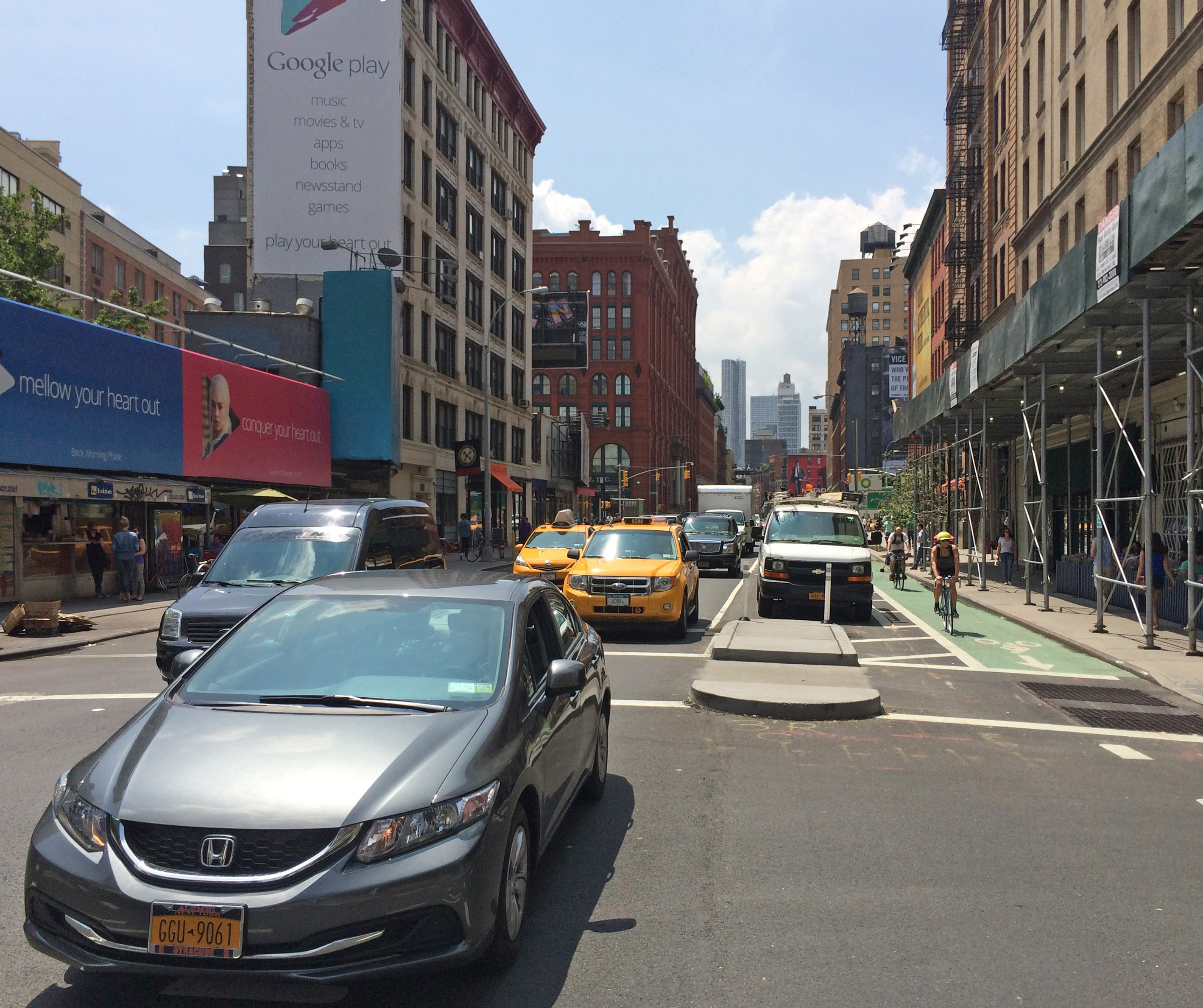
“All the great cities and towns are congested” is an urbanist trope that needs to be retired. It comes, I believe, from arguing against traffic engineers when they talk about Level of Service rather than observing the best places.
I was in London the day their Congestion Zone started. I was staying in a hotel on High Holborn, a major through street that continues Oxford Street (or vice versa, depending on where you’re coming from). The Central Line on the London Underground was undergoing repairs and wasn’t operating.
The day before the congestion zone started, Oxford Street and High Holborn were jammed even more than usual with buses, taxis, trucks, and cars. You could walk any distance long or short in either direction from Oxford Circus or Tottenham Court Road and know that walking would be faster than taking a bus. They were traveling along stuck nose to tail in traffic. The problem was the speed the buses were going, not time spent waiting for a bus.
That day traffic flowed like water in an oversized pipe. It was so pleasant, and such a pleasant contrast to the day before. It was the way cities should be. You could walk without being buffeted by noise and diesel smell, and you didn’t have to wait at every crossing for traffic to pass by.

In New York, my office is at the intersection of Broadway and Bleecker Street, with a back door that’s just a hundred feet from the subway I take almost every day. That’s on Lafayette Street, which because it ends a quarter mile north and changes direction from one-way north to one-way south a quarter mile south is a low-traffic street. Or was, until the DOT recently added protected bike lanes and bright and bold new striping. Now the street is full of cars going faster than before. The change substantially lowers the quality of the pedestrian’s experience, and even the cyclist’s experience. Protected bike lanes obviously have a place and a purpose, but the old bike lane —a wide lane painted between the parked cars and the wide street, with a wide buffer lane — was a much more pleasant experience.
Many Manhattan streets are frequently congestion-free. Midtown, which is congested, is one of the least pleasant parts of the island for walking. Douglas Duany showed me that to teach someone what Feng Shui is have them stand on one of Manhattan’s one-way arterials as the traffic rushes towards. them.*
When we traveled to Europe to look at streets while we were writing Street Design, Victor Dover and I noticed that several of our favorite streets — from the multi-way Gran Via in Barcelona, to the regular Boulevard St. Germain in Paris, to the High Street in Marlborough — were so congested that the grind and smell of traffic made spending much time on the streets exhausting. I can remember when that wasn’t so. And I can think of countless great small cities and towns like Nantucket and Charleston that are rarely congested.
* From Salon: “John Massengale and I are standing in the middle of 1st Avenue at East 4th Street, in New York’s East Village, and he does not like the feng shui. He points to the thick, white lines in the roadway, directing drivers toward a left turn. ‘Automobile-scale striping,’ he notes. ‘It’s telling you: ‘This is not a place for you.’”
